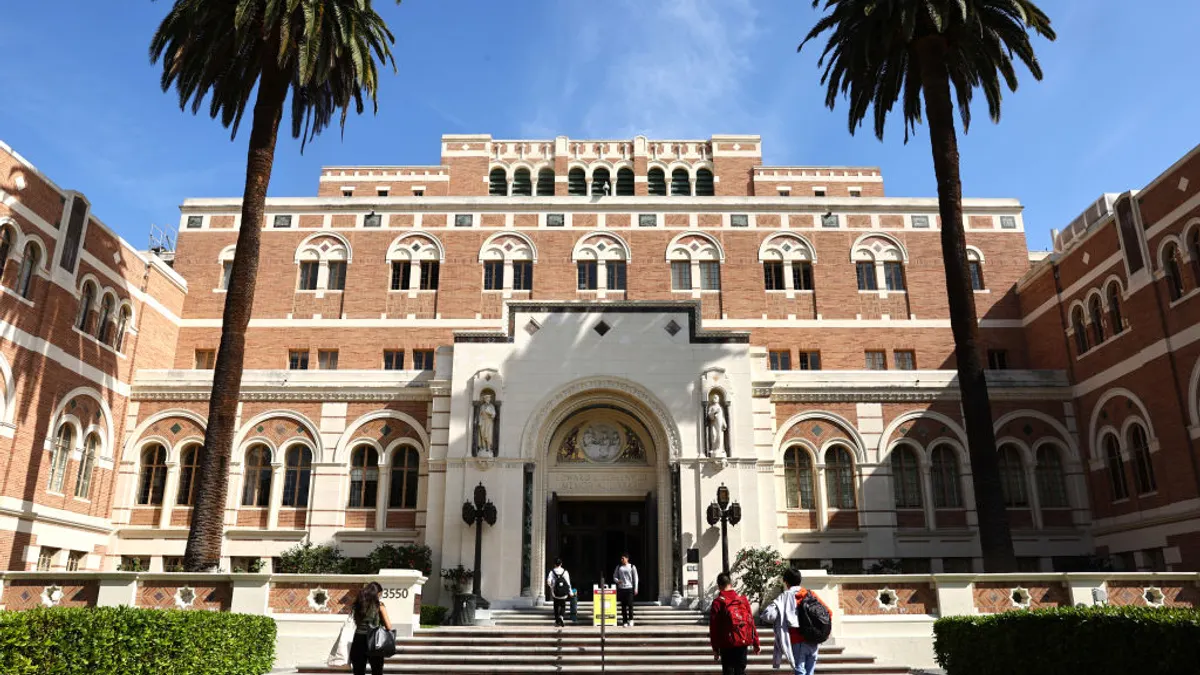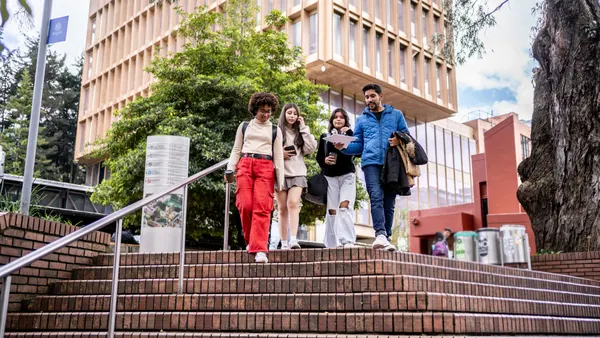Dive Brief:
- Among first-year students enrolled in fall 2023, 86.4% returned to college in the spring for their second semester, which marks the second-highest persistence rate since 2015, according to new data from the National Student Clearinghouse Research Center.
- Retention rates hit their highest level since 2015 — the first year covered by the study — with 83.7% of students returning to the same institution for their second semester. Another 2.6% transferred to another institution, while 13.6% didn’t return for the spring.
- At 77.6%, persistence into the second fall semester also hit its highest level in the past nine years, according to the research center.
Dive Insight:
As the number of high school graduates enters a long-anticipated decline, retention and persistence will likely take on heightened importance as colleges work to keep the students they have to maintain enrollment and revenue stability.
Amid demographic shifts, students’ shorter-term persistence and retention rates may take greater significance. Shapiro noted that, “We’ve been focused on second fall persistence for years, but that’s too long to wait for many institutions, who seek earlier indicators of student success.”
National Student Clearinghouse’s latest study tracks new students’ fall-to-spring persistence for the first time. The group’s data shows progress overall both in short and longer-term persistence among college students, as well as retention. However, the overall numbers mask disparities among student groups.
“Today’s report helps schools focus on supporting students who are at risk sooner,” Doug Shapiro, the center’s executive director, said in a statement. “This is especially important for part-time students, older students and those who start at community colleges, where first spring persistence rates are lower.”
Part-time students in particular face a “substantial disadvantage,” the research center noted. Only 67.4% of part-time students who first enrolled in fall 2023 returned for the spring semester, compared to 92.1% of full-time students.
A wide gap in persistence exists between older and younger students as well. In fall-to-spring persistence, the gap was a little over 28 percentage points, with 89.7% of the students 20-years-old and younger returning for their second semester compared with 61.4% of students 25 and over. Those 20 years old or younger returned the following fall at a rate of 82% — nearly 37 percentage points higher than for those who were 25 or older.
There were also disparities by race. Hispanic, Black, multiracial, Native American, and Native Hawaiian and Pacific Islander students had lower persistence rates than White and Asian students.














